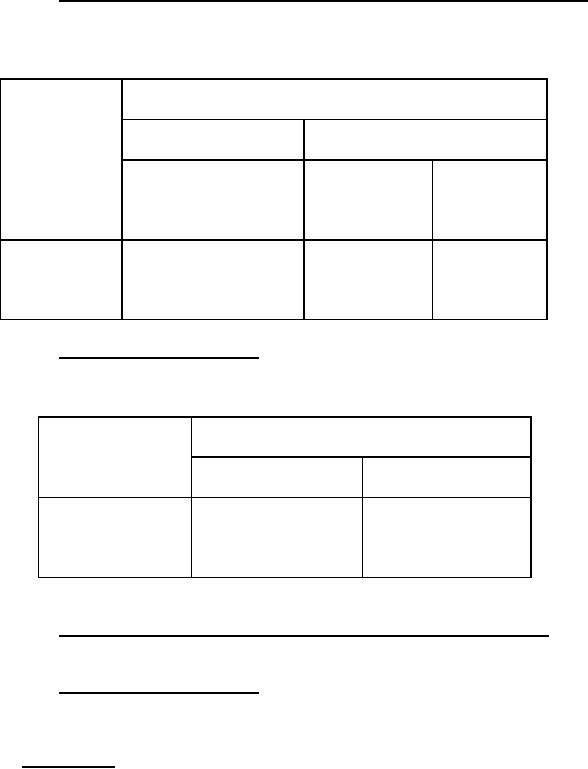
MIL-DTL-21248C
3.5.4.6.2 Type 1, Class 2, 4 and 10; Type II, Class 2; and Type III, Class 2 retaining rings. The
rings shall not crack and the permanent set shall not exceed the limitations specified in Table XVII.
TABLE XVII. Permanent Set Limitations for Type I, Classes 2, 4 and 10; Type II,
Class 2; and Type III, Class 2 Retaining Rings.
Permanent Set (max)
(Percent of Free Diameter)
Carbon Steel and
Ring Size
Beryllium-Copper
Corrosion Resistant Steel
(inches)
Type I, Class 2, 4 and 10 Type I, Class 2
Type I, Class 4
Type II, Class 2
Type II, Class 2
Type III, Class 2
Type III, Class2
0.250 to 0.469
1.0
2.5
0.500 and over
1.0
1.5
1.5
3.5.4.6.3 Type I, Class 3 retaining rings. The rings shall not crack and the permanent set shall
not exceed the limitations specified in Table XVIII.
TABLE XVIII. Permanent Set Limitations for Type I, Class3 Retaining Rings.
Permanent Set (max)
Ring Size
(Percent of Free Diameter)
(inches)
Carbon
Corrosion Resistant
Steel
Steel
0.750 through 1.000
1.5
1.5
1.062 and over
1.3
1.4
3.5.4.6.4 Type I, Classes 5, 6, 8 and 9; and Type II, Classes 3 and 4 retaining rings. The rings
shall grip the minimum groove diameter and shall have no less than 3 point contact.
3.5.4.6.5 Type I, Class 7 retaining rings. The free diameter of the rings before expansion test
shall be within the specified tolerances on MS90707. The rings after expansion over shaft (see
4.3.2.1.1.5) shall not show any evidence of cracking.
3.6 Workmanship. Workmanship shall be in accordance with high grade commercial practice
governing this type of material. Each retaining ring shall be uniform in quality and temper and shall be
free from hanging burrs, slivers, gouges, porosity, cracks, objectionable scale or any other defects
which may adversely affect the serviceability of the rings.
28
For Parts Inquires call Parts Hangar, Inc (727) 493-0744
© Copyright 2015 Integrated Publishing, Inc.
A Service Disabled Veteran Owned Small Business